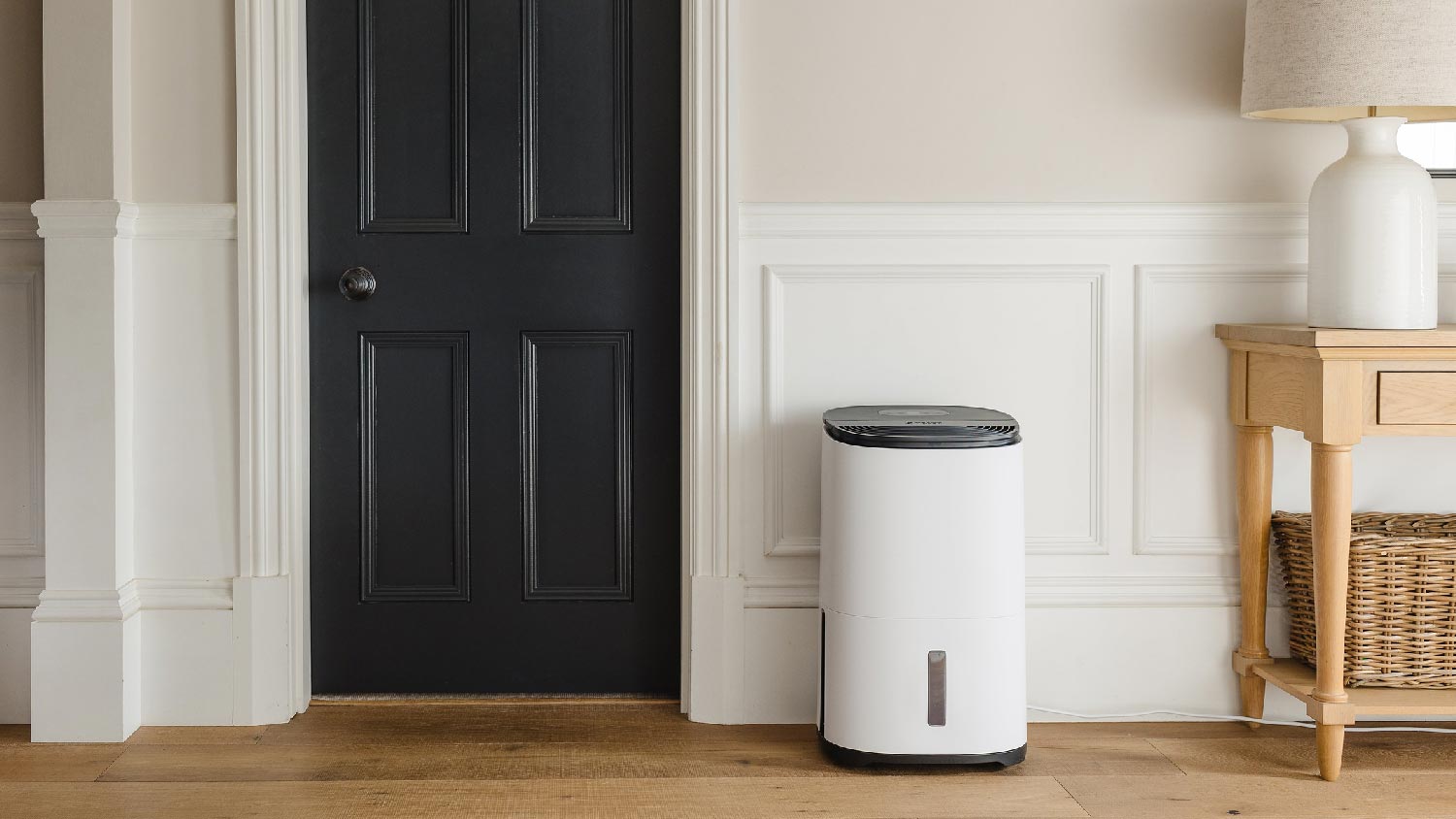What Is EER in HVAC and How Is It Different Than SEER?
The higher the EER, the more efficient your air conditioner


EER measures AC unit efficiency under high temperatures.
SEER measures AC unit efficiency over an average cooling season.
A higher EER or SEER indicates it’s a more efficient AC unit.
Air conditioners are required to display SEER, but not EER.
SEER is more relevant for homeowners who don’t live in extremely warm climates.
If you’re in the market for a new air conditioner, you may have seen a lot of acronyms thrown around, causing you to question what is EER in HVAC terminology. The EER number can provide homeowners with a lot of insight into the energy efficiency of the air conditioner, especially in climates with high temperatures.
Learn more about what EER means in HVAC, how it’s used, and when homeowners should pay attention to this specification.
What Is EER in HVAC?

An HVAC Energy Efficiency Ratio, also known as EER, is the ratio of an AC unit’s cooling capacity (measured in British thermal units or BTUs) to the energy input (measured in watts). It calculates the unit’s overall cooling efficiency at an outdoor temperature of 95 degrees. The more efficient the air conditioner, the higher its EER number.
This rating also takes into account humidity removal, and it's useful because it shows how an air conditioner performs under the maximum cooling setting.
What Is SEER in HVAC?
EER isn’t the only measurement of an air conditioner’s efficiency. AC units are also measured by a seasonal energy efficiency ratio (SEER).
While similar to EER, this rating looks at an AC unit’s cooling capacity during an average cooling season divided by the total electric input. Instead of one steady temperature, SEER is calculated using a range of outdoor temperatures that may come up during the cooling season.
What's More Important: EER or SEER?
EER measures efficiency in a moment in time, while SEER measures energy usage over a longer time frame. For most homeowners, SEER is a more important number to pay attention to for determining long-term energy usage.
However, EER can be a helpful metric for homeowners who live in climates where the temperature regularly hits 95 degrees since AC units need to work much harder under high temperatures. The U.S. government’s HVAC efficiency standards only mandates that air conditioners display SEER, but some units also share EER. Both ratings show homeowners how efficiently the AC unit will run, but it’s important not to compare EER ratings to SEER ratings since each looks at different criteria.
How to Determine the Right EER and SEER for Your Home
While EER can provide a snapshot of how efficiently an AC unit will run, most homeowners should consider SEER first unless they live in an extremely warm area. For both ratings, a higher number indicates a more efficient air conditioner, which can lead to energy cost savings over time.
Work with your local air conditioner pros to understand what level of EER or SEER is right for your home and your budget. The federal government and some municipalities also offer tax credits for installing energy-efficient home appliances, so check with your HVAC company or local offices to see if you qualify.
Do EER and SEER Impact Costs?
Both ratios indicate efficiency levels in your air conditioner, and a more efficient unit can lead to lower energy costs for your home. However, AC units with high EER and SEER may cost more upfront. For example, a 16 SEER AC can cost up to $3,000 more to install than a 14 SEER unit. However, lower electricity bills over time will make the initial investment worth it over the product’s lifetime.
You can use online energy efficiency calculators to help predict how much money you’ll save on energy costs with equipment carrying different SEER ratings.





- Furnace Repair
- Air Conditioning Repair
- HVAC Repairs
- Furnace Installation
- Wood & Pellet Stove Repair
- Dehumidifier & Humidifier Repair
- Heat Pump Companies
- Swamp Cooler Repair
- Wood Stove Services
- HVAC Companies
- Commercial A/C Repair
- Geothermal Installation
- Air Conditioning Installation
- Boiler Repair
- 24 Hour Furnace Repair
- Geothermal Repair
- Heat Pump Repair
- Humidifier Installation
- Thermostat Repair
- Thermostat Installation
- Nest Installation
- Heating & Cooling
- Heating Repair
- Furnace Cleaning
- Furnace Tune-Up
- HVAC Technicians
- Subcontractors
- Furnace Maintenance
- Plumbing & Heating Companies
- Wood Stove Inspection
- Mini Split Installation
- Wall Heater Repair
- Duct Installers
- 2024 HVAC Efficiency Standards for Homeowners
- The Best Time to Buy an Air Conditioner
- 9 Types of Air Conditioners: Pros, Cons, and How to Choose
- What Is the Best Temperature to Set Your Air Conditioner to in the Summer?
- Heat Pump vs. Air Conditioner: What’s the Difference?
- How to Pick the Right Window Air Conditioner Size for Your Home
- Should You Cover Your Air Conditioner in the Winter? Everything to Know
- Problems With Your AC Unit? Here’s When To Call HVAC Repair
- What’s the Difference Between a Portable AC and a Window AC Unit?
- Do Air Conditioners Use Water? They Don’t, So Here’s What That Puddle Is










